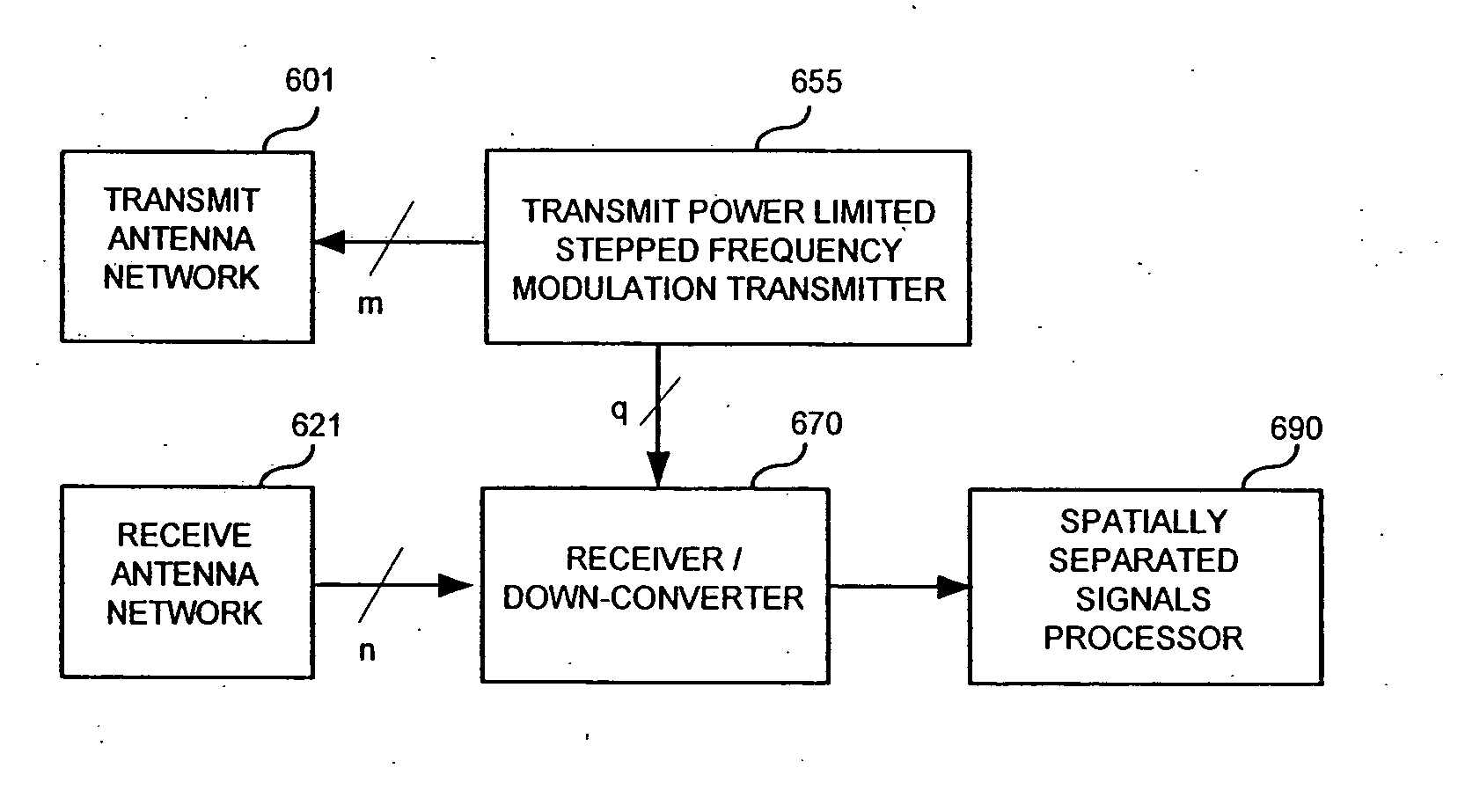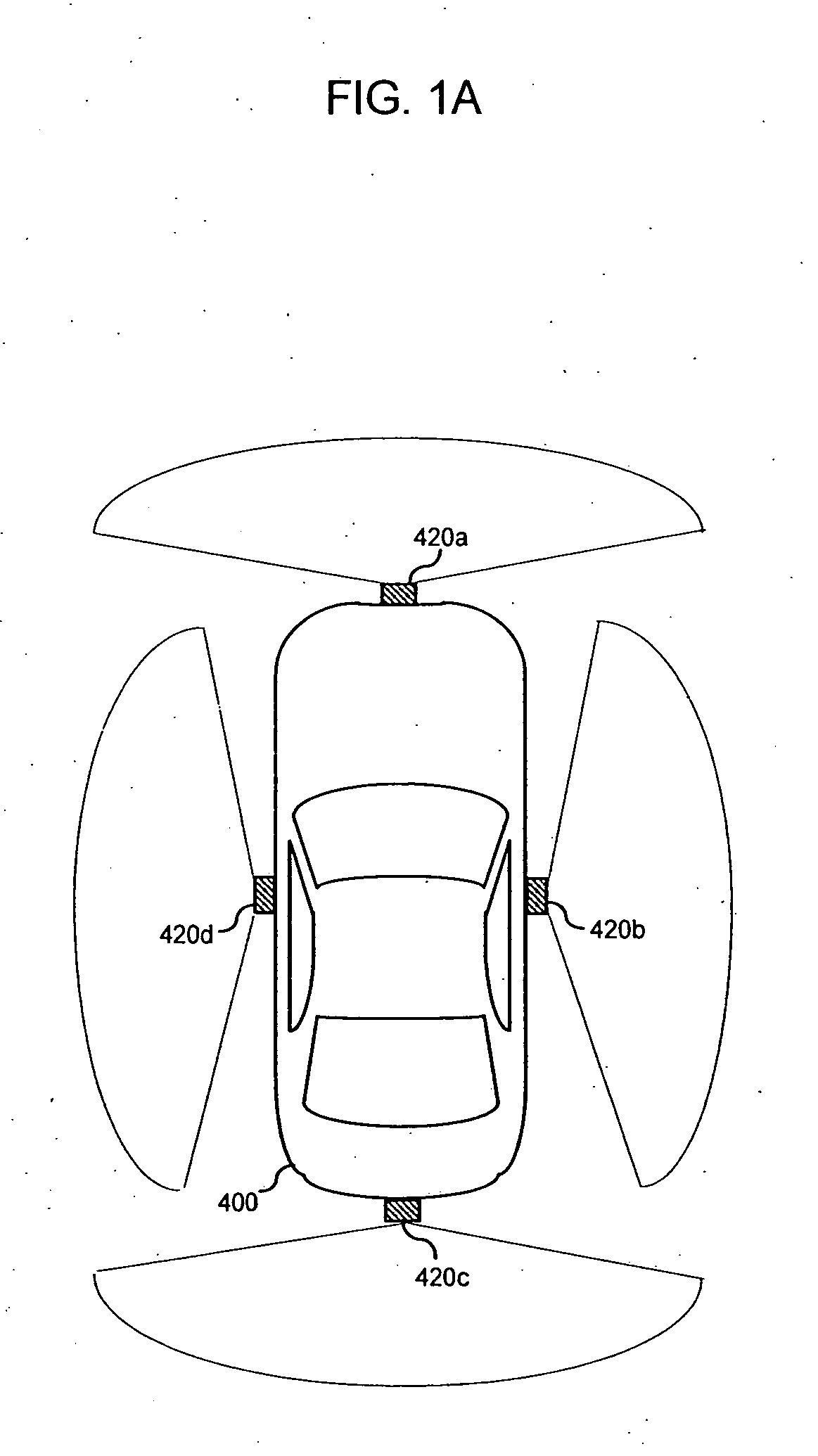Methods and apparatus for automotive radar sensors
- Summary
- Abstract
- Description
- Claims
- Application Information
AI Technical Summary
Benefits of technology
Problems solved by technology
Method used
Image
Examples
Embodiment Construction
[0079] In the detailed descriptions and figures that follow, FIGS. 2A-B, 3A-F, 4A-B, 5A-C, 6A-D, 7, 8A-G, 9A-H, 11, 12, 13A-H, 14A-C, 15A-C, 16, 17A-B, 18A-B, 19, and 20A-B disclose stepped-frequency and / or stepped-PRI radar sensor architectures and methods for target range and / or velocity determination compatible with techniques of processing of spatially separated signals for target angular direction determination and / or multiple target angular discrimination, and FIGS. 10A-G illustrate examples of spatially separated signal processing techniques for target angular direction determination and / or multiple target angular discrimination. These figures and architectures are meant as examples, but not limitations, as additional methods can be used to create spatially separated signals compatible with the stepped waveforms and angular direction determination methods presented.
[0080] The spatially separated signals can be received using the different receiver methods described to provid...
PUM
 Login to View More
Login to View More Abstract
Description
Claims
Application Information
 Login to View More
Login to View More - R&D
- Intellectual Property
- Life Sciences
- Materials
- Tech Scout
- Unparalleled Data Quality
- Higher Quality Content
- 60% Fewer Hallucinations
Browse by: Latest US Patents, China's latest patents, Technical Efficacy Thesaurus, Application Domain, Technology Topic, Popular Technical Reports.
© 2025 PatSnap. All rights reserved.Legal|Privacy policy|Modern Slavery Act Transparency Statement|Sitemap|About US| Contact US: help@patsnap.com



